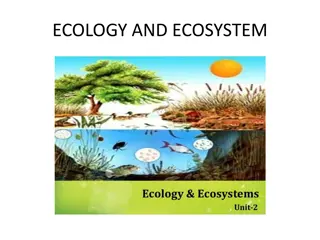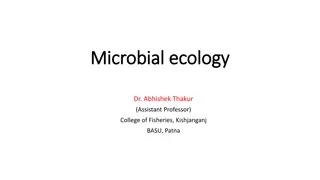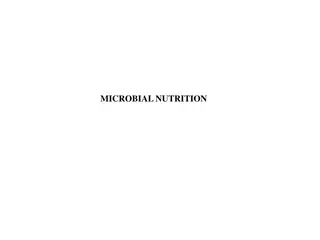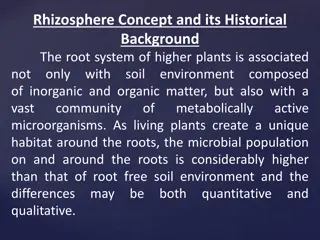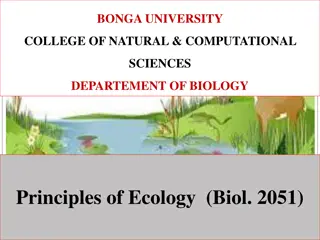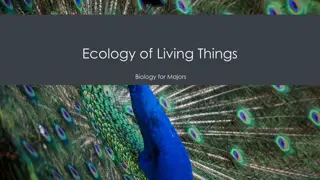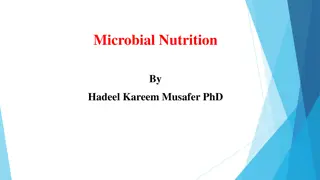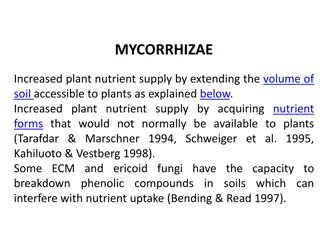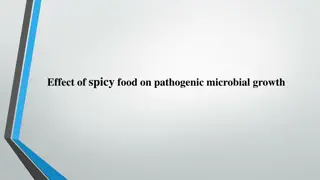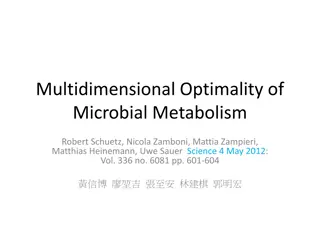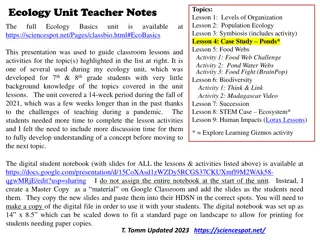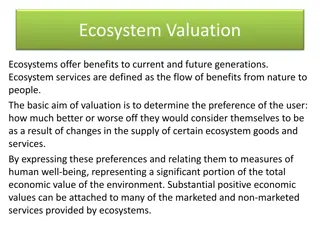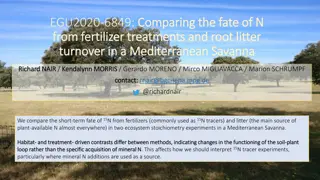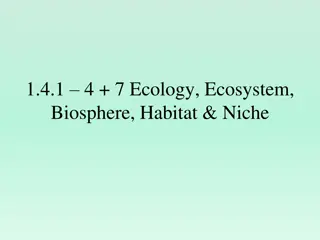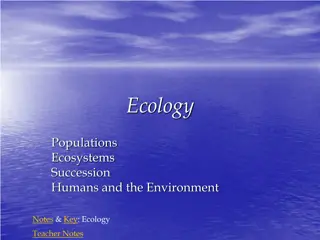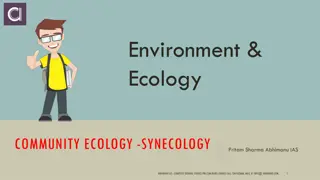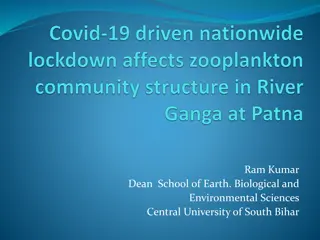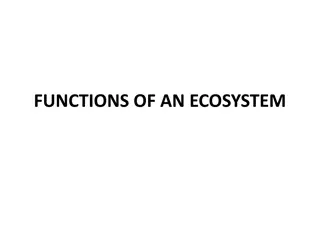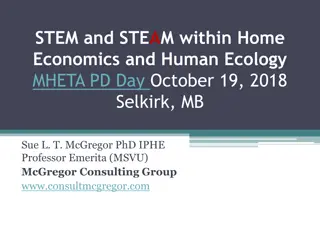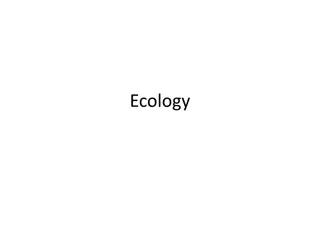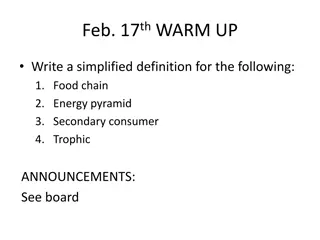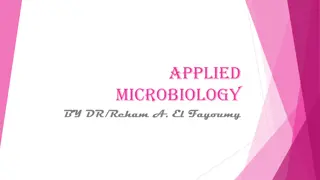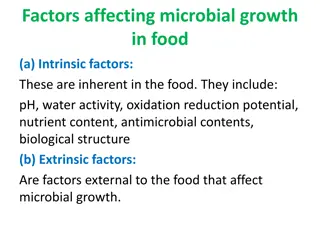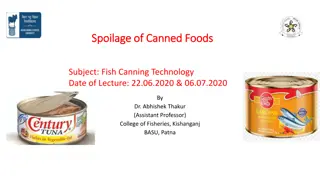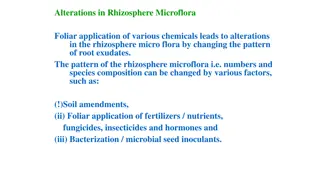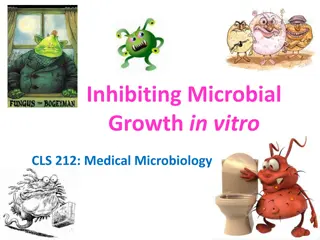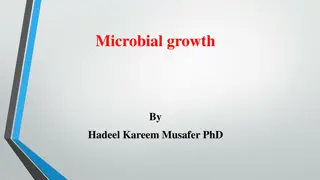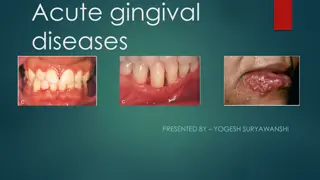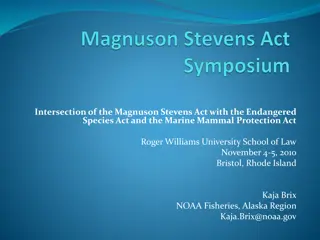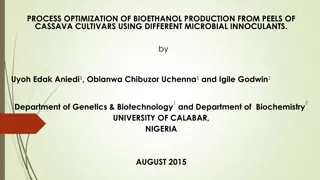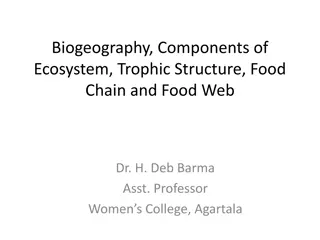Understanding Microbial Ecology and Ecosystem Components
Study the diverse relationships of living organisms in their environment, focusing on microbial ecology, ecosystem components, and evolutionary adaptations. Explore the dynamics of abiotic and biotic factors, including producers, decomposers, and consumers, and the types of interactions shaping populations within ecosystems.
Uploaded on Sep 14, 2024 | 0 Views
Download Presentation

Please find below an Image/Link to download the presentation.
The content on the website is provided AS IS for your information and personal use only. It may not be sold, licensed, or shared on other websites without obtaining consent from the author. Download presentation by click this link. If you encounter any issues during the download, it is possible that the publisher has removed the file from their server.
E N D
Presentation Transcript
Fundamentals of microbial ecology CLS 416
Ecology: Is the study of the relationship of living organisms among each other & interactions or relations with their physical environment. Microbial ecology= Environmental microbiology: Distribution of microorganisms in the environment Relationship with each other Relationship with higher organisms Relationship with the environment they live in Ecosystem: Total communities in a habitat + physical environment they interact & live in. Biosphere:The region of the earth inhabited by living organisms. The largest ecosystem.
Components of the ecosystem 1- Abiotic components: Include the non-living or physico-chemical factors that provide nutrients & energy to the biotic component. The basic compounds and elements of the environment 2- Biotic components: It consists of the living organisms of the environment, It consists of populations that belong to different species inhabiting a common environment existing in association with each other.
Biotic component Producers: - Self feeders and providers of food & energy to the rest of organisms. -Autotrophic bacteria: Produce organic materials from oxidation of inorganic compounds. -Photosynthesizers: Plants, algae, cyanobacteria. Decomposers: - live on dead decay bodies as a source of carbon. Putrification. Fungi, bacteria and protozoa. break large organic ,materials to smaller particles .. Inorganic compounds
Biotic component ----cont Consumers: -Heterotrophs: Can not produce organic compounds, but rely on the producers to do so. - animals as primary consumers are herbivores. secondary consumers are carnivores. - nematodes - protozoa The activity of the 3 constitute the food chain or food web, that allows the exchange of food and energy so as recycling them in the ecosystem.
Evolutionary adapataion Changes in the environment, as depletioin of nutrients, will lead to changes in the biotic component where living organisims try to adapt to the change. Phenotypic adaptation (physiologic) - Physiologic change to adapt to temporary changes in the enviroment. - Once the changes are over, organisms revert back to original state. Genotypic adaptation (evolutionary) - genetic changes might occur by mutation - permanent changes.
Types of interactions Type of interaction Effect on Populations Pop. A Pop. B Neutralism No effect No effect Commensalism Beneficial No effect Synergism Beneficial Beneficial Mutualism Beneficial Beneficial Competition Detrimental Detrimental Amensalism(antagonism) Detrimental No effect Parasitism Beneficial Detrimental Predation Beneficial Detrimental


